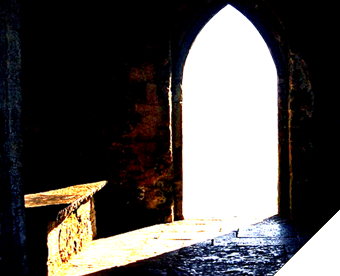About
Inspired by the learning and witness of Irish Catholics in previous centuries, Roundtower Association was established in 2018 with the aim of promoting the study of the Church’s continuous teachings and those of Her greatest Doctors by means of study groups, debates and conferences. The Holy Rosary is an important prayer for the group. The belief of Roundtower Association is that the re-Christianisation of Ireland can only come about through the rediscovery of the principles that first won Ireland for Christ. These principles are twofold - formation and prayer. It is these principles that have been forgotten by modern secular Ireland and it is these principles which should be more widely promoted within the Irish Church today.
With regards to the first principle it was the scholarship of the Irish Monastic centres of the sixth, seventh, eighth and ninth centuries, nourished by the Holy Eucharist, that overcame paganism, that helped Europe, in a small way, see off the Dark Ages and that masterminded the construction of the Roundtowers of the tenth, eleventh and twelfth centuries. These Roundtowers stood like sentinels watching on the walls of a land newly consecrated to the Kingship of Christ. On his return to Rome from Ireland and the U.S.A in 1979 Pope John Paul II said of the Monastic sites of Ireland that they “were still charged with a great mission for the world”. Roundtower Association echo the Holy Father’s words again today and works in a small way to realise them.
The second principle was augmented in the thirteenth century with the gift of the Holy Rosary to St. Dominic and through him to the whole Church. It was the Holy Rosary that enabled Irish families to witness to their faith in the subsequent centuries of persecution. Addressing the House of Commons in 1654 Oliver Cromwell famously said:
“All is not well with Ireland yet. You gave us the money, you gave us the guns. But let me tell you every house in Ireland is a house of prayer and when I bring these fanatical Irish before the muzzles of my guns they hold up in their hands a string of beads and they never surrender”.
In a way it was these families that became spiritual towers faithful to the words of Christ:
“Consider, if one of you has a mind to build a tower, does he not first sit down and count the cost that must be paid, if he is to have enough to finish it? Is he to lay the foundation, and then find himself unable to complete the work, so that all who see it will fall to mocking him and saying, here is a man who began to build, and could not finish his building? ….. so it is with you; none of you can be my disciple if he does not take leave of all that he possesses”
(Luke 14:28-33)
See our "News" section for details of current events and "Talks" for a link to previous conferences..
Round towers of Ireland and their meaning today.
The origins of the Round Towers of Ireland lie in the “combat of the desert” and the Thebaid of Egypt. It was there, in early part half of the fifth century, that a monk named John Cassian began to formulate the framework of his spiritual works. Having entered monastic life in Bethlehem Cassian came to the Desert Fathers in Egypt via Constantinople and ordination to the deaconate at the hands of the spiritual giant St. John Chrysostom. But it was in the desert, having been ordained a Priest , that he immersed himself in the Holy Scriptures and helped developed the art of Lectio Divina. One of his favourite passages was St. Luke’s parable of the Tower (Luke 14:28-33).
“And indeed which of you here intending to build a tower would not first sit down and work out the cost to see if one had enough to complete it. For if you lay the foundation and are not able to complete it everyone who sees it will ridicule you saying that person began to build and wasn’t able to finish………. so, in the same way none of you can be my disciple unless you give up all your possessions”
For St. John Cassian the Tower was a metaphor for the spiritual life in that the three parts of the structure of a tower (the foundation, the tower walls and the apex) represented the three reciprocal and interrelated stages of the spiritual journey all integrating nature and grace:
The foundation representing the purgative stage: Poverty of Spirit, Purity of heart, Fear of the Lord, detachment.
The tower walls representing the illuminative stage: building up of the virtues as the building up the tower wall brick by brick.
The apex represented the unitive stage: Contemplation of God.
St. John Cassian later moved from Egypt to the Isle of St. Honorat about a mile from Cannes off the southern coast of France. Here he became an influential teacher in the Abbey of Lerins and introduced his spiritual works and the monastic tradition of the Desert Fathers to his many students including to one particular individual later to be known as the “Apostle of Ireland” – St. Patrick. It was St. Patrick that took back these teachings to Ireland and passed them onto his own spiritual sons and daughters who in turn made St. Cassian the most widely read author in the early monastic libraries of Ireland and it was they who later built the Round towers in the 9th, 10th and 11th centuries.
Map of the Island of St Honorat
.jpg)
Plaque in memory of the Patron Saint of Ireland on St Honorat

Medieval buildings on the foundation of the old Abbey of Lerins
.jpg)
Experts today suggest that the purpose of the Round towers was not defensive nor to act as a belfry but rather to allow one of the monks, who otherwise lived in community, to withdraw and live as a hermit within the Tower for a specific time and advance more speedily along the spiritual journey. But the purpose of the Round Towers did not end there, there was a teaching aspect to the Towers as well. When the monks went to prayer or the people, in the large towns that surrounded the monastic sites, woke the first thing they seen, in the silhouette of the early morning darkness, was the Round tower. The structure was a pedagogical masterpiece reminding them of the daily spiritual effort required, the daily prayer, the daily combat with temptations, combined with the need for God’s grace in order to advance on the journey to perfection. Like any great architectural work of their time each part of the tower supported the other part. The cone apex secured the tower walls driving them into the foundation all in a reciprocal fashion, St. John Cassian saw how the same happened in the spiritual life.
Is this part of what St. John Paul II was getting at in 1979 when he said, on his return to Rome from Ireland, that the monastic sites of Ireland “were still charged with a great mission for the world”? Do the Round towers still point to our heavenly home? Do they beckon Catholics today to enter into spiritual combat within themselves and within the world so as to form the foundation to build the virtues individually and as a society striving for the common Good informed by Charity? Those who built these structures took the words of Christ seriously and took St. John Cassian literally. They were certainly not to be ridiculed





